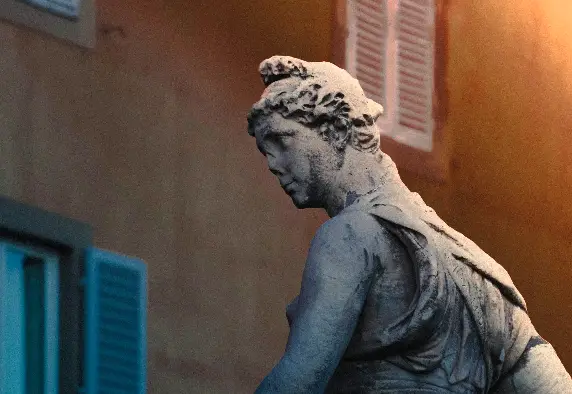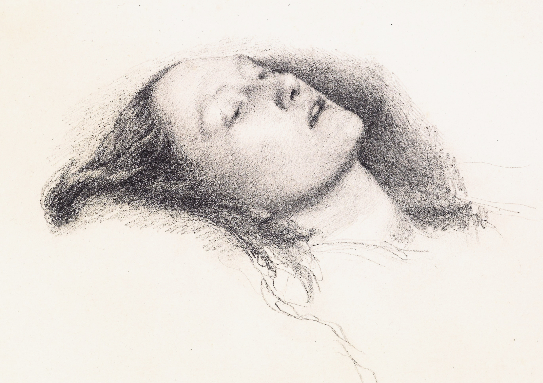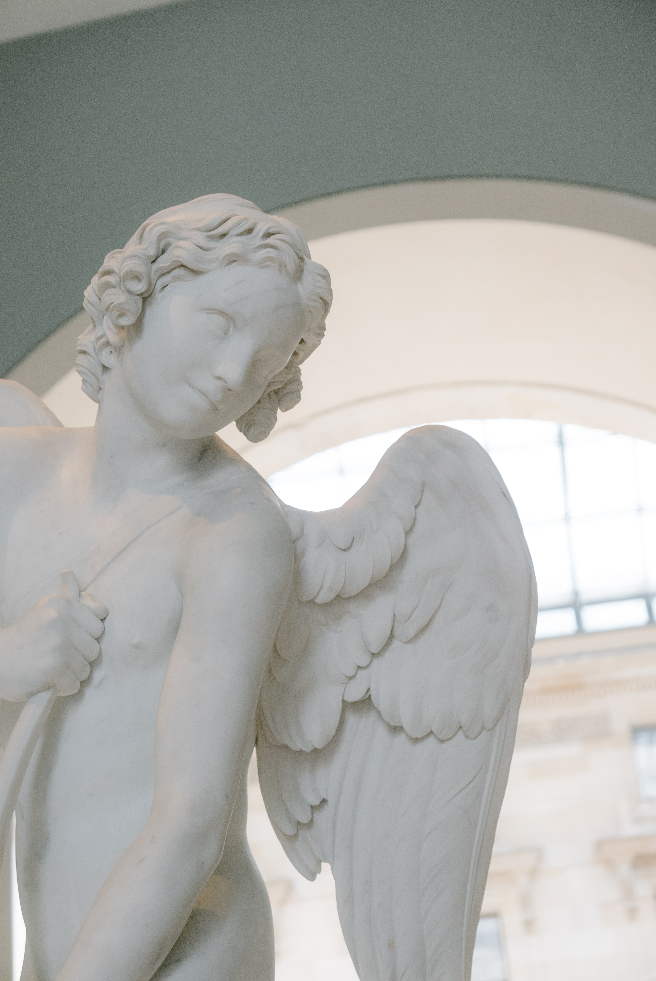Not everyone goes to an official school or academy to learn about the principles of drawing, but you should know what these skills can teach you. If you're curious to find out what kind of specialized skills academic drawing can improve, this guide will provide an insider's view into that world.
What is Academic Drawing?
This is one of the oldest and most complete forms of learning about art and the background of art from the European perspective. It includes the essential studies that involve the eclectic history behind the Old Masters that innovated drawing and painting techniques. These studies provide formal lessons which will teach you to look at aspects of creating a drawing using anatomical and historical art references to produce art.
Art techniques and principles of academic drawing learned in this way can also provide modern-day artists with additional meaning to their art skills. These skills can include the overall message and intellectual approach to developing drawings and paintings. These also include fine details such as symbolism and aesthetics. Plus the skills to create these realistically in a classic sense.
Most students who have gone through academic drawing workshops and courses walk away having well-rounded skills that help develop an artistic career. These students also have learned about the historical importance of this drawing style and why it's such an essential addition to art skills that can be further explored by any emerging artist.
What is the Highest Form of Academic Art?
You might say that artistic intent is the highest form of academic art since this cannot be taught in a method that so many people understand. You can spend years studying in art classes and art schools learning the fundamental theories of artists' history and styles, but it doesn't guarantee that it'll rub off onto you. Indeed, styles can be learned, and methods can be copied, but what emerges from genuinely understanding the highest levels?
Please look at this drawing and sketching video course I have created. Use this link.
I can tell you it isn't a textbook answer and should be taken with a grain of salt. Your artistic ability and the ability to form your own ideas and concepts may be two separate trains of thought. Many of the most remarkable artists in this world developed these traditional skills through hard work and perseverance. As you might say, it takes the Hand of God' to touch you when it comes to having the ability to reach masterful levels of artistry.
Sadly, that hasn't stopped the thousands of people who have (at best) lackluster skills for understanding how to present their art. The appreciation of academic art is to embrace the message and reinvent that concept with elegance and style. The basic skills should be embraced with a passion and curiosity to express yourself, not just copy and paste. To call yourself an artist is a daily reminder that you cannot provide visual thanks to the Old masters who helped pave the way for you without a traditional knowledge of art skills.
Related Posts You May Enjoy:
- An Introduction to Classical Drawing
- How To Practice Drawing Anatomy: The Essential Guide
- How to Draw People: A Detailed Guide
- How to Draw Portraits in Black and White
- Human Figure Drawing Made Easy
Principles of Academy Art:
As these are listed as principles, they are also fundamental skills learned by using methods and examples. They also include precise rules that serve as your roadmap for the instructions you learn. Each subject is just as devoted to art forms a prerequisite for every other skill you learn from academy art schools. Here is what you can expect from any self-respected Academy Art collective of courses.
• Still life
The differences in learning still life when drawing or painting are very similar to modern-day product advertisements. The only difference is that the messages and meanings behind these drawings are entirely missing. You can group a bunch of fruit and flowers, but what does that tell you. What does it tell you about the vibrant colors or polarities of a meaningful story within a still-life picture?
You will learn how still life drawings became a fashionable piece of art that is still just as powerful today. You will also learn how composition, objects, and materials further hint as clues you might want to express. The concept of still life is to capture life in all forms, whether or not it's living or dead. Since this concept is centered on the celebration of beauty, life lessons are seen with darker hints of shadows, revealing morbid ideals.
What you can learn from still life courses will help you compose and create scenes without using a live model and still have plenty of character in your drawing.
• Portrait
For as long as vanity has existed, the classic portrait shows a part of history that tells us a bit of who is in a picture. Unlike the meaningless selfies made today, you can't learn about that person from an image all by itself. Classic portraits were arranged to indicate wealth and status while also conveying emotion and deep thought. At times it would show minimal backgrounds but used natural light to create dramatic effects.
Classic portraits also portrayed people in real life with no exaggeration, so these subjects were captured in relaxed expressions. These elements were added to a portrait to be displayed in a home. Where their image was joined by other family members. To this day, a classic style portrait conveys status and self-worth while continuing a long-standing tradition to capture a moment in time.
You'll find that learning about portrait drawing is a closer representation of capturing the essence of a figure up close to reveal those natural character traits.
• Figure
The art of figure drawing can cover a wide range of poses and themes, but all comes down to how the person or model you're drawing is being displayed. Academic figure drawing will include live models that provide you ongoing practice to capture a pose in a short period. You also learn about the techniques that were used for creating scale and the rules of body proportions.
Many of these lessons are simple mathematics that applies to male and female figures, which never change except for slight modifications.
This method will help you learn speed and perception from angles that you only can see from your vantage point. This skill will strengthen your ability to draw on the fly and give you better skills for getting the subtle details of anatomy just right.
Figure drawings are often sketched using various materials but later can be refined by painting a final representation. This is the best skill for preparing for a more significant project that can combine several figure sketches to create an optimal pose that you feel your figure or model best portrays.
• Painting
This course is not just an introduction to the methods and materials used for making your own paints, but mixing and creating colors and tones that go into a finished painting. You'll learn about different types of paint mediums and the brushes that create a painting. As usual, you'll be given plenty of historical details on how and where pigments originate from and how they are used on canvas, wood, or paper.
You need to have an eye for color and mixing skills for mastering delicate shades. In addition to this, you'll learn brush techniques that are used and blending tricks to create depth. In the hands of a skilled artist, paints and painting skills that come from classic instruction will feature fine execution of composition and levels of fine detail. Just as previous generations of classic artists have proven, all painting skills will significantly elevate your artistic ability.
With that all being mentioned, painting is also an ongoing exercise in patience. Not every paint medium dries simultaneously, which is why some oil painting can take many hours to complete. As a pinnacle for the founding principles of academic drawing and painting, this course will be your meat and potatoes of professional skill.
• Anatomy
What classic art education isn't including a generous lesson in anatomy? In a classical sense, the study of anatomy helps you to understand the human form or anything that has a skeleton, for that matter. Learning about the skeletal structure and muscles underneath the skin allows you to fill out a drawing with accurate detail. Many modern artists forget that anatomy is significant, and this is why superhero comics look pathetically unrealistic.
Using the skills to see below the skin will help you have a great knowledge of why specific poses appear natural and not forced. It also helps you learn the names of the bones and muscles to have greater knowledge of the terminology used. Whether or not this is used in your work later, you'll be able to explain how a pose was designed and what it takes for the human form to achieve this.
• Human form
This course goes hand in hand with anatomy and figure drawing. Essentially, the human form is studied without being censored. Models brought into classic drawing classes are often nude, so this might take a bit of getting used to. After all, you can't get to know the human body with a clothed model… This training is part of the European method, which has always helped to desensitize an artist, just like medical doctors train on cadavers.
The only difference is that doctors are trained to see blood and bodily fluid without being squeamish, whereas artists are being trained to see anatomy for what it is. Students are further trained to notice surface details of the skin, including wrinkles or supple folds, and down to the pore detail and differences in coloration. It was widespread for many classic artists to recreate subtle markings, including veins, birthmarks, or even freckles.
The study of the human form is everything you see from head to toe on your model, reproduced in sketches, drawings, and later paintings.
• Light and shadow
The two elements that make any drawing appear more realistic are the addition of light and shadow. It's a skill that every artist needs to learn to create the right amount of light that your subject appears within. While it's more of a science in itself, using light on any model or object can increase or decrease the dramatic effect. Any professional DOP (Director of Photography) for an epic film will use light and shadow to apply this effect.
Classic painters and artists knew this secret well, and the use of available light was taught to their students as a valuable asset of any realistic picture. While the ability to use stationary lighting has dramatically improved in the last decades, you will undoubtedly learn the classic methods for using natural light sources to illuminate your models or objects. On top of this, you can get a clear idea of how to recreate natural light by using artificial lamps as light sources.
You can then concentrate on how these shadows fall onto a subject and the strongest highlights by learning these lighting methods. No matter what drawing or painting medium you use, you'll be able to recreate light and shadow with greater accuracy.
Perspective Studying the Old Masters
This approach to studying the Old Masters is more than a history lesson on a famous artist who developed styles and techniques. It's a chance to step into their shoes and learn a method that defined their legacy. The beauty of learning about these skills will give you further insight to trick that fool the eye into seeing realistic detail. It also can show you how they prepared the work that was serious research for them long ago.
When an artist was commissioned to make a painting, many rough sketches and ideas need to be created. Just like adding ingredients onto a pizza, everything is layered one piece at a time.
• Cast drawings in graphite
Another excellent task you will learn is the skill of drawing from cast statues or busts of classic or ancient art. These are different from drawing a live model or material objects since most statues are white marble or plaster. They can be tricky to draw since the image that you see is now separated into black and white. A lot like what you'll draw with graphite onto your paper, cast drawings are an exercise in recreating known objects of art.
Lighting will be controlled with a single light source, so you have some light that isn't moving, but the actual task is learning to translate the exact proportions of these cast items onto your paper. Since graphite makes a great medium, it can be blended further to create soft or hard shadows using blender tools. Not only does this give you the ability to recreate fine details in your picture, but the illusion of depth also makes a 2D drawing look more like 3D when it's complete.
• Cast drawings in charcoal
A bigger leap into realism is using charcoal to create cast drawings. Since charcoal has deeper black tones than graphite, you need to be careful where shadows are going and keep your shadowing skills as accurate as possible. Charcoal has long been used by the Old Masters since it was the best drawing and sketching medium. Graphite wasn't used until later in the mid 16th century.
Most of the earlier masters in the 14th and 15th centuries commonly used charcoal for their studies and sketches. You'll find that using charcoal will require more sharpening and maintenance than the kinds of graphite pencils used these days. Thankfully, a classic academy will show you how to prepare your charcoal sticks so you can make fine lines or sticks meant for making subtle shadows.
You will also learn how different it is to use charcoal over graphite can which materials are used to remove excess charcoal from your paper's surface.
• Bargue plate drawing
Just as the lessons of learning perspective in a drawing help you to define horizon lines and their natural perspective, the Bargue method is a foolproof set of rules for getting a cast drawing as accurate as possible. You will learn how to judge distance and determine angles based on what you see. The length and size of an object are broken down into measurements that you recreate on your paper.
These measurements are all visual, often using a sightline within an imaginary border. The defining details are used as a roadmap that helps you trace lines where the exact details should go, like a wire graph overlaid onto your paper. Each graph section can be scaled up or down depending on how big your paper is. The ideal part of using the Bargue method is that it requires fewer lines to use as reference.
This method can be used for recreating many other images, but in classical training, you'll focus on plaster busts more often than not.
• Drawing still life vessels
Just as you will learn about still life drawing, still life vessels are focused on the complexity of jugs, jars, and bottles. The combination is often a variety of each assembled in any order. Technically speaking, anything that is a vessel for something to be placed inside can appear in the drawing. This classic style is unique since you have many rounded and reflective surfaces to recreate.
Bottles and Jugs
You'll learn how glass bottles and jugs refract light and reflect items from all around them. This is a crucial lesson that will teach you how reflection is not so easy to master. Using the classic methods and techniques to reproduce these lighting effects, you can learn to simulate glass, metal, and ceramic surfaces. This goes further than simple light and shadow since you concentrate on translucent or shiny items other than opaque surfaces.
Create Art With My Favourite Drawing Resources
General Drawing Courses. I like Udemy if you want to develop your knowledge of drawing techniques. Udemy is an excellent choice due to its wide range of creative courses and excellent refund policy. They often have monthly discounts for new customers, which you can check here. Use my link.
Sketching and Collage. Take a look at this sketching resource I have created. Use this link.
Proko. Is one of my favorite teachers who surpasses in the teaching of Anatomy and Figure drawing. Prokos course breaks down the drawing of the human body into easy-to-follow components aiding the beginner to make rapid progress. For this, I really like Proko.
Art Easels. One of my favorite ways to draw is by using a drawing easel, which develops the skill of drawing on a vertical surface. The H frame easel is an excellent vertical way to add variety to the style and type of marks you create when using a drawing board.
To see all of my most up-to-date recommendations, check out this resource I made for you.
Sources:
Source: https://sadievaleriatelier.net/all-courses/




